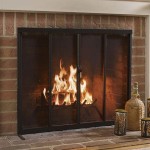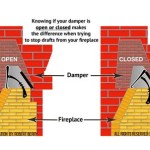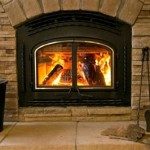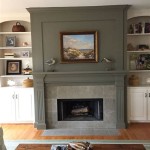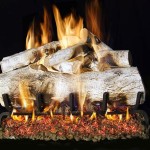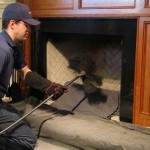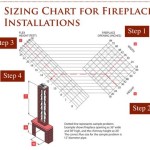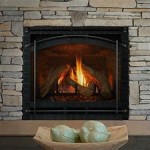Why Does My Fireplace Smoke Sometimes?
A fireplace is often a focal point of a home, providing warmth and ambiance during colder months. However, a smoking fireplace can quickly transform this cozy setting into a frustrating and potentially hazardous situation. Understanding the reasons behind occasional fireplace smoking is crucial for maintaining a safe and enjoyable home environment. This article examines several factors that contribute to this problem, offering insights into troubleshooting and preventative measures.
Chimney Obstructions and Blockages
One of the most common causes of a smoking fireplace is an obstruction in the chimney. The chimney's primary function is to vent combustion byproducts, including smoke, up and away from the living space. When this pathway is compromised, smoke can backdraft into the room. Obstructions can take many forms and develop over time.
Creosote buildup is a frequent culprit. Creosote is a byproduct of burning wood, consisting of unburned wood particles, gases, and other organic compounds. As these substances rise through the chimney, they cool and condense, forming a sticky, tar-like residue on the chimney walls. Over time, this buildup can significantly reduce the chimney's diameter, restricting airflow. Regular chimney cleaning, ideally performed annually by a qualified professional, is essential to remove creosote and prevent blockages. The frequency of cleaning depends on several factors, including the type of wood burned and the frequency of fireplace use.
Animal nests are another potential source of chimney obstructions. Birds, squirrels, and other small animals often build nests in chimneys, especially during the spring and summer months. These nests can completely block the flue, preventing smoke from escaping. A thorough inspection of the chimney, particularly before the heating season begins, can identify and remove any animal nests. Installing a chimney cap with a mesh screen can prevent animals from entering the chimney in the future.
Debris, such as leaves, branches, and other outdoor materials, can also accumulate in the chimney, especially in areas with heavy foliage. Overhanging trees should be trimmed to minimize the amount of debris that falls into the chimney. A chimney cap also helps to prevent debris from entering.
Negative Air Pressure in the Home
Negative air pressure within a home can significantly impact the performance of a fireplace. This condition occurs when more air is being exhausted from the house than is being supplied, creating a pressure imbalance. This imbalance can draw air down the chimney, counteracting the natural upward draft needed to vent smoke.
Several factors can contribute to negative air pressure. Exhaust fans in kitchens and bathrooms, when operating, draw air out of the house. Clothes dryers also exhaust large volumes of air. Tightly sealed homes, while energy-efficient, can exacerbate the problem by limiting natural air infiltration. Modern homes are often built with improved insulation and tighter seals than older homes, which reduces heat loss but also restricts airflow.
To mitigate negative air pressure, consider opening a window slightly when using the fireplace. This allows for an alternative source of air, reducing the pressure imbalance and promoting a proper draft in the chimney. In some cases, installing a fresh air intake near the fireplace can provide a dedicated source of combustion air, further minimizing the effects of negative air pressure.
Another solution is to examine the operation of other appliances that exhaust air. Consider staggering the use of exhaust fans and the clothes dryer with fireplace operation to minimize their impact on the home's air pressure. Evaluating the home's ventilation system and making adjustments to improve airflow balance can also be beneficial.
Damper Issues and Other Structural Factors
The fireplace damper is a critical component that controls airflow in the chimney. A properly functioning damper seals the chimney when the fireplace is not in use, preventing drafts and heat loss. When the fireplace is in use, the damper must be fully open to allow smoke to escape efficiently. A faulty or improperly positioned damper can significantly contribute to smoking issues.
A common problem is a damper that is not fully opening. This can be due to rust, debris, or warping. Inspecting the damper mechanism and ensuring it is clean and moves freely is essential. If the damper is damaged beyond repair, it should be replaced by a qualified technician.
Another issue is a damper that is the wrong size or type for the fireplace. An undersized damper restricts airflow, while a poorly designed damper may not seal properly when closed, leading to drafts and heat loss. Consulting with a fireplace professional can help determine the appropriate damper for a specific fireplace.
Beyond the damper, other structural factors can affect fireplace performance. The height of the chimney influences the strength of the draft. A chimney that is too short may not generate sufficient draft to overcome downdrafts or negative air pressure. Local building codes typically specify minimum chimney heights based on roof pitch and surrounding structures.
The size of the firebox relative to the flue also plays a role. An oversized firebox can produce more smoke than the flue can effectively vent. Fireplace design principles dictate the appropriate ratio between firebox size and flue area to ensure proper combustion and smoke venting. In some cases, modifications to the firebox or flue may be necessary to improve performance.
Finally, downdrafts caused by nearby structures can contribute to smoking problems. Tall trees, buildings, or hills can deflect wind downwards, pushing smoke back into the chimney. Extending the chimney height or installing a specialized chimney cap designed to mitigate downdrafts can sometimes resolve this issue.

Why Does My Fireplace Smoke Into Home Occasionally Valley Chimney Sweep Restoration

Why Is My Fireplace Smoking Lackawanna County Pa Integrity Chimney

Why Your Fireplace Is Smoking How To Fix A Smokey

Why Does My Fireplace Smoke Up House

Why Is Smoke From My Fireplace Entering Home St Louis Mo English Sweeps

Why Does My Fireplace Smoke

Why Is Smoke From My Fireplace Entering Home Siskiyou County Holy

Why Does My Fireplace Smoke Jotul

Why Does My Fireplace Smoke Up House

Why Does My Fireplace Smoke Jotul
Related Posts

